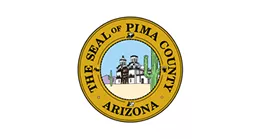Pima County, the second most populous county in sunny Arizona, was struggling to track the many variables that come with employing nearly 7,000 individuals with diverse job functions—from “cowboy,” sheriff, and public health nurse, to attorney, civil engineer, and property appraiser.
“It’s challenging to manage such a diverse workforce, especially when it comes to training,” said Nicole Schneider, senior program manager for risk management for the Pima County government. “We needed a reliable way to track data associated with our employees for a multitude of reasons including public health and safety, compliance and of course, training.”
Our Approach
First things first, Origami Risk aimed to simplify how the county and its 43 different departments tracked employee data. We integrated the information into the Origami Risk platform from approximately 12 spreadsheets that the risk management department had been using. This gave the group one central repository for data upkeep.
Because so much of the same information is shared and reviewed among the different departments, we made sure the multiple forms and records that are tied to single individuals or events could be pre-populated with existing data from the system.
For instance, Pima County is using the platform to capture any data related to incidents. Should an event become a claim, the claim record will automatically be pre-populated with information that was entered into the system at the time of the event. This creates major efficiencies and improves the accuracy of claim records.
We also ensured such documents could be updated in real-time, cutting down on the creation of multiple versions that can quickly become out of date because of address changes or any other factors that might be classified as “moving targets.”
According to Schneider, having real-time data in one place has been especially helpful when it comes to employees’ motor vehicle records. The risk management department maintains employees’ driving records and can now not only report current violations to supervisors, it can also report a driver’s history.
Formerly, different employees in the risk management department would have to go through the process of pulling a motor vehicle record from the motor vehicle division—even if a record had just been pulled. Now, to save time, employees can look at the most recent record within the system, and if it was pulled within a certain time frame, they can rely on the record that already exists.
“Because we spend less time on data entry while actually improving our reporting quality, we are way more efficient,” Schneider said.
Beyond efficiencies, the quality of Pima County’s employee data has also improved with system implementation, especially data related to employee training, medical screenings, vaccinations, and equipment—all important areas to track because of the nature of so many government employees’ jobs, their level of interaction with the public, and related regulations
Previously, the county had to lean on the supervisors within its many departments for providing such data and for follow up. The information was often unreliable due to the absence of standardized tracking. A lack of clarity around training, immunization, and equipment requirements also hindered data quality.
We configured the system so that Pima County can track training, screenings, vaccinations, and the equipment that employees need to do their jobs. For example, the team is able to run reports to identify if a driver for the county needs to undergo driver safety training; the schedule of vaccinations for an employee at the jail; and the safety equipment needed for a technician, as well as the equipment’s replacement schedule.
Because Origami’s platform is tied into Pima County’s payroll system, the team receives reports when people change jobs and must meet new medical screening, equipment, or training requirements. The team is able to use the reports to notify supervisors within the system regarding employees who need to fulfill training or occupational medical requirements, as well as the employees that are due to receive updated equipment.
Schneider reports that being able to track and automate tasks in such areas has improved compliance and related documentation. This is important in the event of an audit from the Centers for Disease Control or OSHA—agencies that impose many of the regulations, as well as penalties or fines for not adhering to their requirements.
“Most importantly, our employees are now better protected from any potential hazards associated with their job duties,” Schneider said. “Further, we are much more confident that we are in compliance with any training or health and safety regulations, helping protect us from any negative implications that might result otherwise.”
Unexpected Value: Fleet Management
With a large number of vehicles and drivers on the roads, Pima County, Ariz., needed to track a considerable volume of auto-related data for the purposes of ensuring driver safety, as well as for handling incidents and claims.
Previously, tracking this data meant tracking a lot of paperwork, too. For instance, whenever a motor vehicle incident escalated to the level of a claim, the extensive paperwork would have to travel through four sets of hands.
Now, the process is essentially paperless, with only a single form filled out at the time of an incident. Once form data is saved into Origami Risk, the information captured automatically populates any other electronic documents that eventually tie back to the incident
Managing the county’s fleet-related data provides more than time savings. The platform’s flexibility allowed Schneider to add multiple data sets related to driver and vehicle performance—none of which had been tracked electronically before—for use in uncovering trends and, ultimately, improving safety.
Today, the platform is used to track driver training, CDL licenses, moving violation points, parking violations, data from county vehicles’ GPS tracking systems, and photo enforced driving violations, including feedback, reported using the county’s “How’s my driving?” 1-800 number.
“All this information gives us a more complete picture of our drivers’ habits,” Schneider said. “We can be more proactive and address any problems through training or other measures that encourage safer roads.”
